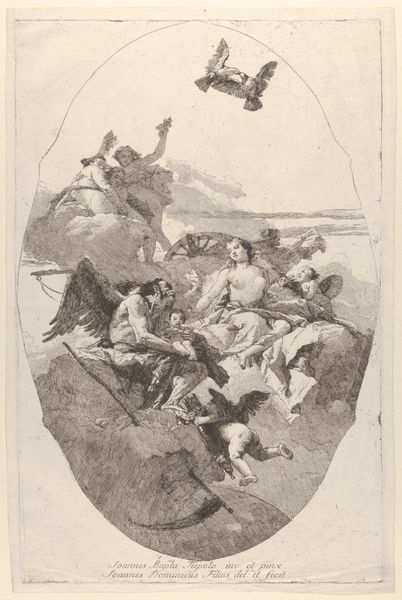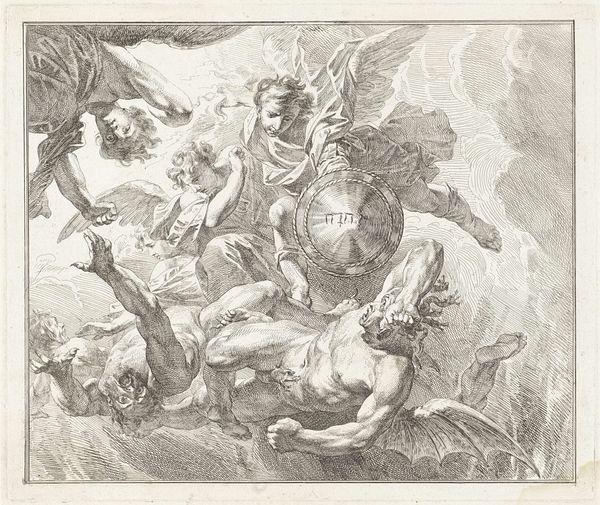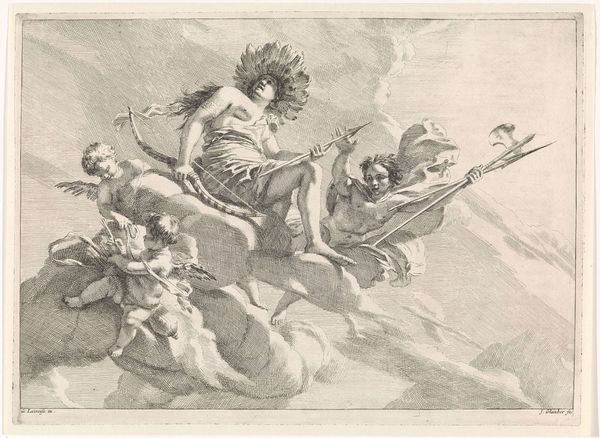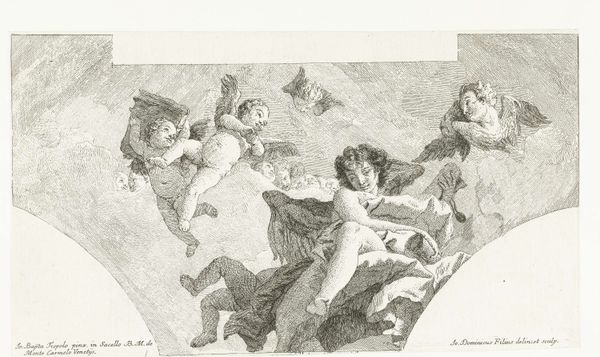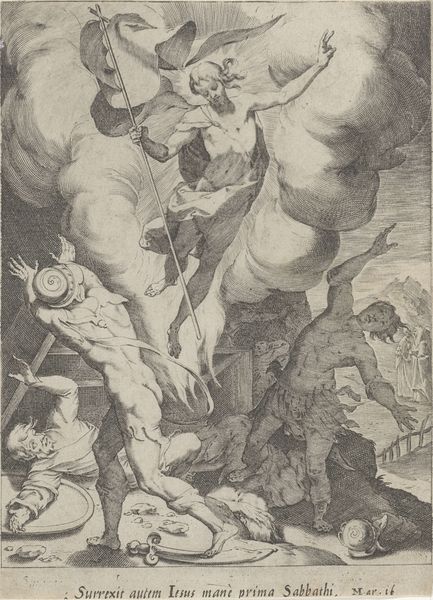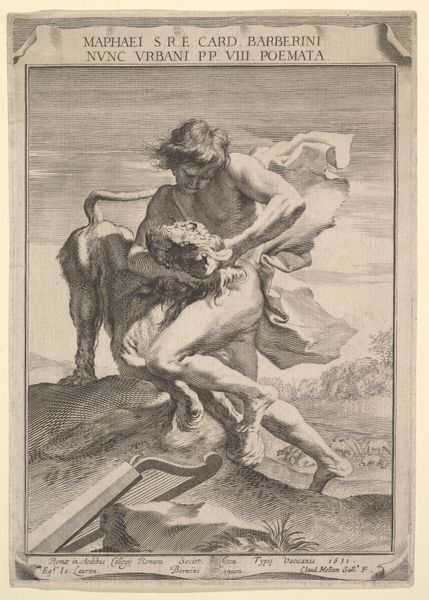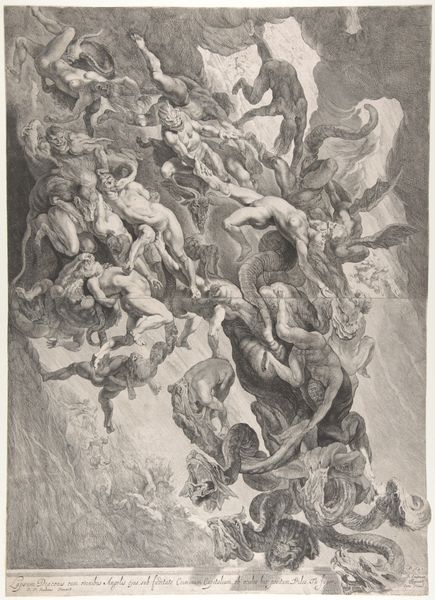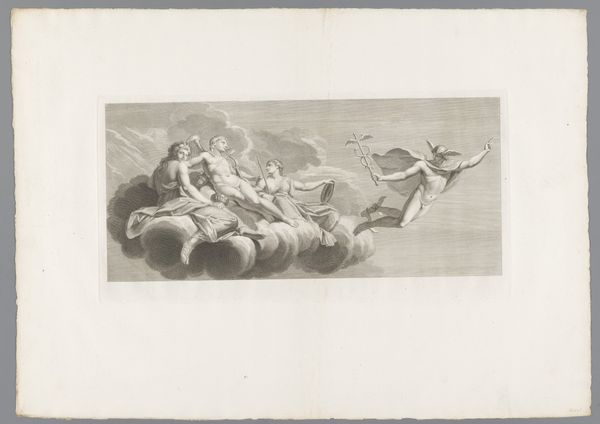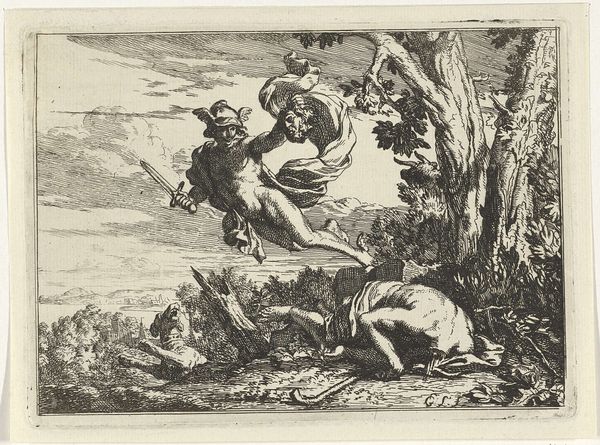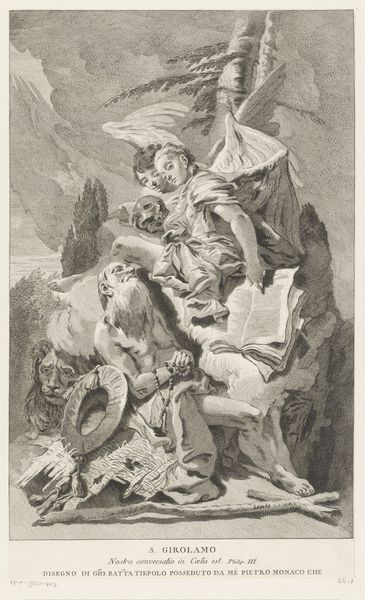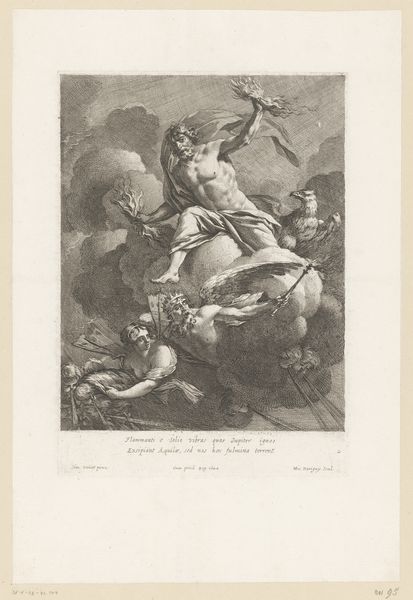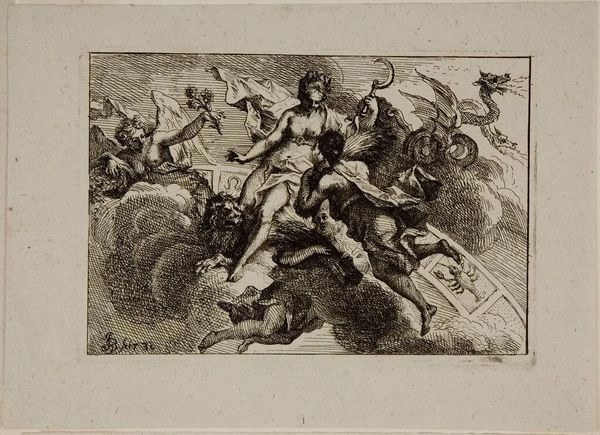
Engel met tros lelies en twee cherubijnen en putto met scapulier 1742 - 1746
0:00
0:00
print, engraving
#
portrait
#
allegory
#
baroque
# print
#
old engraving style
#
figuration
#
engraving
#
rococo
Dimensions: height 191 mm, width 326 mm
Copyright: Rijks Museum: Open Domain
Giovanni Domenico Tiepolo made this drawing of an angel with lilies and cherubs in the 18th century. It's an ink drawing, so we can see the lines clearly and get a sense of how the artist built up the image. Tiepolo was from Venice, a city with a strong artistic tradition. This drawing shows the influence of the Catholic church, which was a big part of Venetian society. Angels and cherubs are common in religious art, and they're often used to represent spiritual ideas. The lilies, for example, are a symbol of purity and innocence, so by holding them, the angel signals his saintly status. The scapular held by the putto is a symbol of the Carmelite order, which promotes a life of devotion and service. Art historians might look at this drawing and consider how it fits into the bigger picture of Venetian art and culture. What other kinds of art were being made at this time? How did artists like Tiepolo contribute to the city's unique identity? By asking these questions, we can learn more about the social and institutional contexts that shaped this beautiful drawing.
Comments
No comments
Be the first to comment and join the conversation on the ultimate creative platform.
